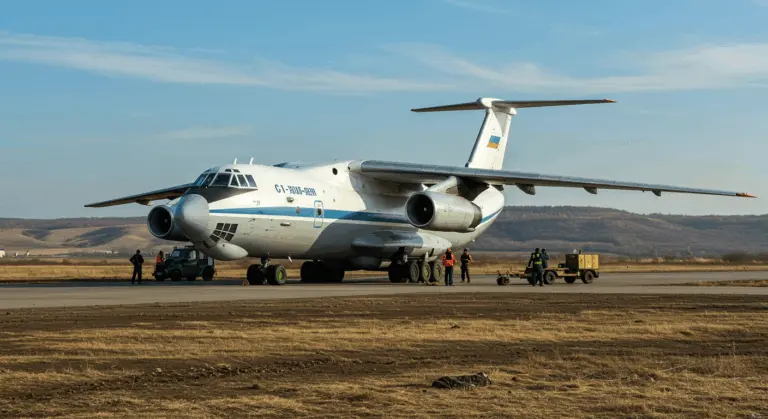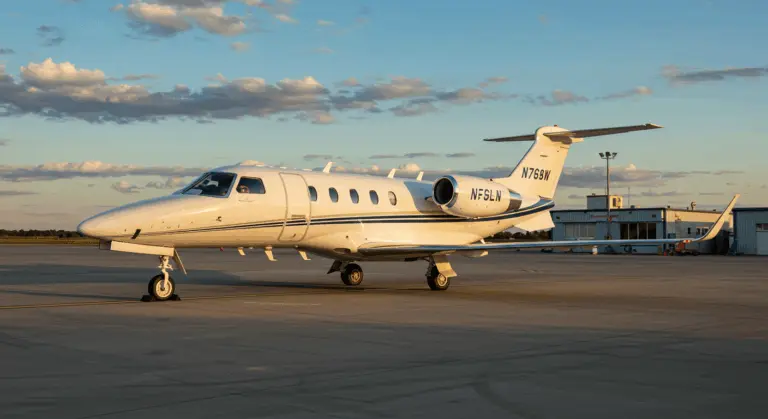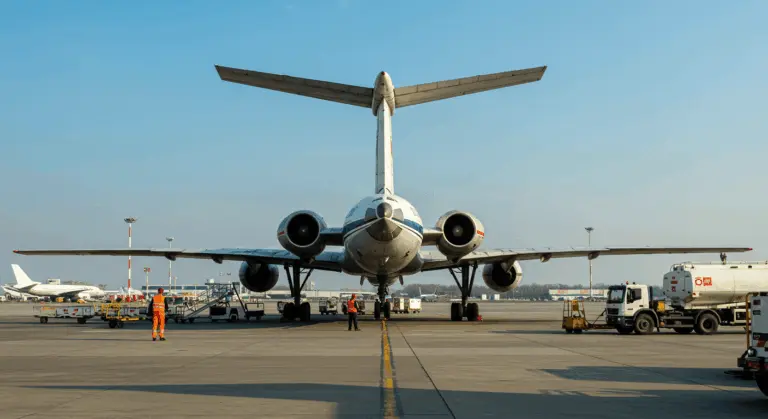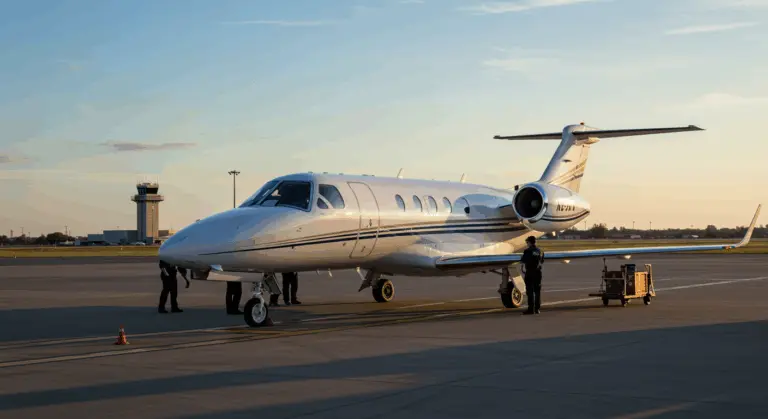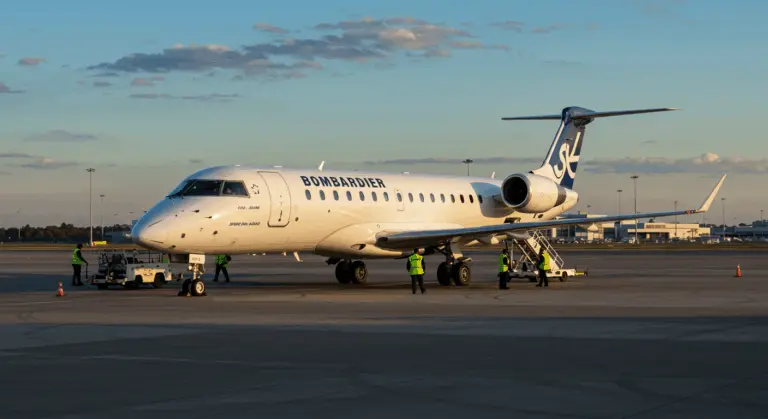Overview of the Lockheed L-1011 TriStar
The Lockheed L-1011 TriStar stands as a pivotal chapter in aviation history—the third wide-body airliner to grace commercial skies, trailing only the Boeing 747 and McDonnell Douglas DC-10. Developed from Lockheed Corporation’s ambitious vision in the 1960s, this medium-to-long-range trivet represented a bold technological leap aimed at capturing the growing wide-body market.
With seating for up to 400 passengers and a remarkable range exceeding 4,000 nautical miles, the L-1011 represented Lockheed’s ambitious return to commercial aviation. From 1968 to 1984, the company crafted 250 Tristan—each one a testament to innovative design and cutting-edge technology.
The Tristan was renowned for its innovative features, which set new industry standards:
-
Advanced Avionics: It included sophisticated autoland capabilities, an automated descent control system, and a flight management system that reduced pilot workload.
-
Unique S-Duct Design: A distinctive S-duct air inlet embedded in the tail routed air to the center engine, creating the aircraft’s recognizable profile.
-
Enhanced Passenger Comfort: The L-1011 pioneered features like lower-deck galleys and lounges, resulting in a more spacious and quieter cabin than its contemporaries.
Development of the Lockheed L-1011
The L-1011 Tristan’s development story tells a story of technological brilliance overshadowed by commercial misfortune. While the aircraft dazzled with advanced features, the program lost substantial money—250 units sold fell far short of covering the astronomical development costs.
Several factors contributed to the L-1011’s commercial struggles:
-
Intense Competition: The aircraft faced strong market opposition from the Boeing 747 and McDonnell Douglas DC-10.
-
Engine Development Delays: Significant problems with the Rolls-Royce RB211 engines pushed back the L-1011’s entry into service, allowing competitors to gain market share.
-
Economic Conditions: A global economic downturn and the oil crisis of the early 1970s further hampered sales efforts.
The L-1011 established an impressive legacy of reliability and innovation that influenced commercial aviation for generations. The program’s financial devastation, however, was the final blow—Lockheed abandoned commercial aircraft manufacturing entirely, focusing instead on military contracts.
Origins of the Lockheed L-1011
The L-1011 Tristan’s genesis traces back to the mid-1960s, when airlines demanded larger, more efficient aircraft to accommodate growing passenger demand on lucrative routes. Recognizing this opportunity, Lockheed embarked on developing a wide-body concept that would combine advanced technology with superior economics and passenger comfort.
After extensive market research and airline consultations, Lockheed unveiled the L-1011 Tristan program in 1967. The company positioned their aircraft as the technologically superior choice among competing wide-body designs, highlighting its advanced avionics, aerodynamic efficiency, and passenger-centric features.
On April 26, 1972, the L-1011 Tristan entered commercial service with Eastern Airlines as its launch customer. Despite significant delays caused by Rolls-Royce RB211 engine troubles, the aircraft quickly gained recognition for its technical excellence and exceptional reliability.
Production and Variants
The L-1011 Tristan evolved into several distinct variants to meet specific market requirements:
-
L-1011-1: The original model with a maximum takeoff weight (TOW) of 430,000 pounds, serving as the foundation for the Tristan family.
-
L-1011-100 & -150: Variants offering incremental improvements in range and payload capacity.
-
L-1011-200: A significant upgrade featuring more powerful Rolls-Royce RB211-524 engines and an increased TOW of 466,000 pounds.
-
L-1011-250: A model with additional fuel capacity and aerodynamic refinements for extended range.
-
L-1011-500: The long-range variant, featuring a shortened fuselage (164 ft 2 in), a substantially increased range of approximately 5,200 nautical miles, and an TOW of up to 510,000 pounds.
Design Features of the L-1011
The Lockheed L-1011 TriStar featured innovative design elements that distinguished it from contemporaries and redefined commercial aircraft standards. Its design philosophy centered on three pillars: passenger comfort, operational efficiency, and technological innovation—principles that influenced decades of future aircraft development.
Passenger comfort was a primary focus, with features designed to enhance the travel experience:
-
Innovative Cabin Layout: A revolutionary below-deck galley, connected to the main cabin by elevators, maximized passenger space.
-
Spacious Interior: The aircraft offered extra-wide aisles, generous overhead bins, and full-sized hideaway closets.
-
Quiet Environment: The Tristan’s engine configuration and design resulted in a remarkably quiet cabin.
From a technical perspective, the L-1011 was a pioneer in aviation technology:
-
Advanced Flight Controls: It featured a cutting-edge automatic flight control system that enabled fully automated landings in zero-visibility conditions.
-
Exceptional Reliability: The sophisticated systems contributed to an impressive in-service reliability rate of 98.1%, making it one of the most dependable airliners of its era.
-
Reduced Pilot Workload: Advanced autopilot and flight management systems enhanced operational precision and safety.
However, these advantages were costly. The L-1011’s sophisticated design increased development and production costs, ultimately undermining its commercial prospects. Moreover, as the industry pivoted toward fuel-efficient twinsets, the Tristan’s three-engine configuration seemed outdated.
Engines of the Lockheed L-1011
The Rolls-Royce RB211 powered the L-1011 Tristan exclusively—an advanced engine that significantly influenced the aircraft’s performance and operational DNA.
The RB211’s revolutionary three-spool architecture separated the fan, intermediate pressure compressor, and high-pressure compressor onto independent shafts, each spinning at optimal speeds. This design provided superior efficiency compared to conventional two-spool engines powering rival aircraft. Early RB211s pioneered carbon fiber composite fan blades, though manufacturing hurdles eventually required a return to proven titanium construction.
Later L-1011 variants—notably the L-1011-200 and L-1011-500—received the more potent RB211-524 series engines. These enhanced power plants delivered increased thrust, superior fuel efficiency, and robust high-altitude performance, enabling the extended range capabilities essential for international operations. Their whisper-quiet operation became a hallmark of the L-1011 experience, creating cabin environments notably quieter than competing aircraft.
The RB211’s advanced technology came at a high cost. Development challenges, delays, and cost overruns drove Rolls-Royce into bankruptcy in 1971, forcing British government nationalization to salvage the engine program. Ironically, the RB211 became a successful engine family, spawning the modern Trent series that powers today’s wide-body fleet.
Operational History of the Lockheed L-1011
After the Rolls-Royce bankruptcy crisis, Eastern Airlines received the first L-1011 Tristan in April 1972. Commercial service commenced shortly after, and the Tristan quickly established an excellent reputation for technical excellence and exceptional reliability.
Through the 1970s and early 1980s, the L-1011 became the backbone of high-density domestic routes and international services for major carriers worldwide. Flight crews praised its advanced systems. Passengers loved its comfortable cabin. However, the 1970s oil crises and relentless competition from newer, more fuel-efficient aircraft gradually eroded the Tristan’s economic appeal. Production ceased by the mid-1980s, though the aircraft continued operating with various operators for decades.
Commercial Use and Operators
The L-1011 Tristan was operated by many prominent airlines globally. Key operators included:
-
United States: Delta Air Lines (the largest operator), Eastern Airlines (the launch customer), and Trans World Airlines (TWA).
-
Europe: British Airways, which used the aircraft on high-density European routes.
-
Asia: Cathay Pacific and All Nippon Airways, which integrated the Tristan into their international networks.
-
Other Major Carriers: Notable operators also included Air Canada, Pan American World Airways, and Saudi Arabian Airlines.
The L-1011’s sophisticated features and exceptional reliability made it ideal for challenging long-haul operations over water and in harsh weather. Airlines prized its autoland capabilities and advanced navigation systems, which enabled operations when less capable aircraft remained grounded. However, as the industry evolved through the 1980s and 1990s, most major carriers gradually retired their Tristan fleets, embracing newer, more fuel-efficient twin-engine wide-bodies.
Today, the L-1011 is no longer used in major airline passenger service. A handful of airframes persist with smaller operators and charter airlines, while others have found new life in specialized roles—aerial refueling tankers and satellite launch platforms. Although no longer in commercial service, the L-1011’s innovation and reliability legacy continues shaping modern aircraft design.
Accidents and Incidents
The Lockheed L-1011 TriStar has an excellent safety record. Its most tragic accident occurred December 29, 1972, when Eastern Air Lines Flight 401 crashed in the Florida Everglades, claiming 101 lives. The investigation found the cause was not mechanical failure but pilot error—the crew became fixated on a faulty landing gear indicator and lost track of their altitude.
Beyond this devastating incident, the L-1011 experienced remarkably few serious accidents. Occasional runway overruns and engine failures occurred, but the aircraft’s robust design and redundant systems typically prevented escalation to catastrophe. The Tristan’s advanced autoland system proved particularly valuable, preventing approach and landing accidents that plagued other aircraft of its era.
This exceptional safety record established the L-1011’s reputation as one of history’s safest wide-body airliners. The Eastern Air Lines tragedy, paradoxically, sparked fundamental changes in cockpit procedures and crew resource management industry-wide. These improvements emphasized situational awareness and proper task prioritization during emergencies—principles that remain cornerstones of airline safety today.
The Tristan’s safety legacy shines particularly bright considering it operated when commercial aviation was still developing standardized safety practices now taken for granted. The aircraft’s inherent reliability and forgiving handling characteristics undoubtedly contributed to its exceptional record—perhaps the most enduring positive aspect of the L-1011’s operational story.
Legacy and Cultural Impact
The L-1011 Tristan’s influence extends beyond its operational service, influencing commercial aviation significantly. Despite commercial setbacks, the aircraft’s technological breakthroughs established new benchmarks for safety, reliability, and passenger comfort that guided future aircraft development.
The Tristan’s exceptional in-service reliability proved that complex systems could achieve remarkable dependability. This reliability, coupled with comprehensive safety features, established the L-1011 as one of aviation’s safest wide-body airliners—a record that remains impressive by any measure. These achievements raised industry standards for aircraft performance and safety standards.
In popular culture, the L-1011 remains notable, appearing in films, television shows, and literature. Aviation enthusiasts continue celebrating the aircraft’s elegant lines, distinctive S-duct engine configuration, and technological sophistication. The Tristan’s unique aesthetic and historical significance ensure its enduring recognition as an iconic design.
The most visible legacy continues with Stargazer—a modified L-1011-100 operated by Northrop Grumman Space Systems. This aircraft serves as an air-launch platform for Pegasus rockets, showcasing the Tristan’s adaptability for specialized missions decades after passenger service ended. This unique application ensures the Tristan continues contributing to aerospace advancement.
Specifications of the Lockheed L-1011
The Lockheed L-1011 TriStar evolved through several variants, each tailored for specific operational requirements. Key specifications for the major models are detailed below.

